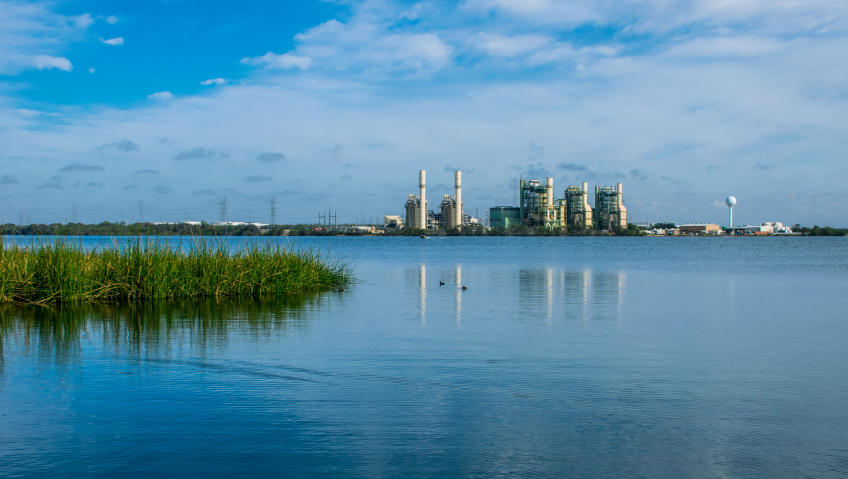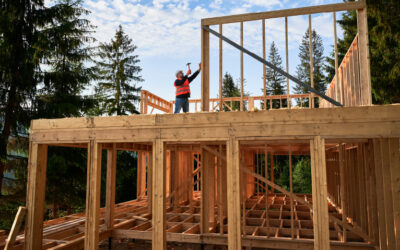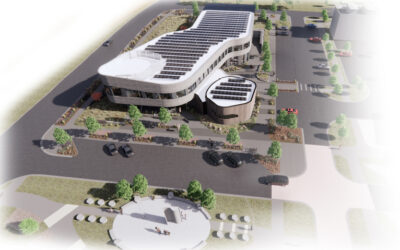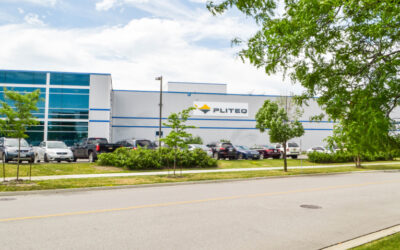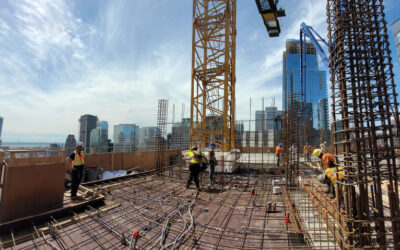As the Government of Canada moves to net zero emissions by 2050, The Mitchell Partnership has a vital part to play in the process. Offering sustainable building design solutions and long-lasting environmental benefits, Toronto’s The Mitchell Partnership (TMP) enables clients to achieve decarbonization of their buildings, new or existing, and reduce their energy use as well.
With 60 years of experience, TMP is an employee-owned, mechanical building services consulting company with an impressive array of design and engineering abilities.
TMP, through innovative design solutions that result in both energy and cost savings, while improving and simplifying systems operations and construction practices, specializes in all manner of building overhaul, from high-rise to commercial, institutional, and retail projects.
Moving on from natural gas
“For a lot of our new projects we’ve started focusing on how to reduce onsite carbon production, which means mainly looking at removing the use of natural gas in buildings, generally for heating or domestic hot water,” says Steve Orchard, a Partner at TMP.
“You could in theory just turn all your gas boilers to electric boilers to essentially decarbonize, but it’s not necessarily the best approach. We’re looking at using ground source heat pumps, geothermal systems, and air-source heat pumps. Anything with a higher COP [Coefficient of Performance] than just regular electric resistance.”
As the country looks to a carbon-neutral future, Orchard says the idea of buildings reducing their carbon production is key, as they represent a huge portion of that carbon product.
“A lot of the new buildings we’re working on are seeing that as a goal and a step in the right direction,” he says. “It’s starting to gain traction and we’re working with a few clients right now that are looking at trying to convert their existing buildings to zero carbon buildings. Obviously the inherent challenges with that approach are different than starting from scratch on a new building.”
Orchard sees this becoming a big focus for developers and building owners in next few years as Toronto starts rolling out requirements for existing buildings, similar to what New York has implemented. This is especially true as the Toronto Green standard ratchets up, Tier 2 becomes a requirement, and greenhouse gas emission targets become more onerous.
Orchard also stresses the need for understanding the difference between net zero energy and net zero carbon: Committing to net zero carbon means eliminating greenhouse gas emissions on site, while net zero energy means producing all energy required for the project on site through the use of on site renewables such as solar PV.
“That’s the focus and I think that’s where we’re struggling with some municipalities where the term net zero is thrown around. Distinguishing between net zero energy and net zero carbon is really important. They are two very different things.”
Net Zero success
One of TMP’s highlight net zero projects is the Joyce Centre for Partnership and Innovation at Mohawk College in Hamilton.
This innovative 96,000 square foot building features a lecture theatre, classrooms, laboratory spaces and study areas. TMP completed the mechanical design for the HVAC and plumbing, ingeniously incorporating heat recovery into each system for outdoor air, variable refrigerant flow, perimeter heating, and service hot water.
The service hot-water system provides short-term thermal storage and interconnects the solar thermal array with the building’s HVAC system through a ground-coupled condenser water system that enables energy to transfer between the systems.
The project has been awarded numerous accolades including the Ontario Sustainable Energy Association’s 2018 Sustainable Project of the Year, and the 2017 Canada Green Building Council Award, Innovation in Sustainability.
“It was the first net zero energy and carbon project that we completed and certified, taking it right from drawing board to realization,” says Orchard. “Over the first few years of operation it’s actually been a net positive building. It’s actually producing more energy than it uses.”
TMP is also working on a number of new projects including relocating the Etobicoke Civic Centre from the West Mall to create a new 500,000 square foot Civic Centre on the Westwood Theatre Lands.
This unique building will include municipal offices with gathering and civic function space, child care centre, a Toronto Public Library district branch, community recreation centre with public pools, and an outdoor civic plaza. The environmental sustainability design aims for a zero carbon target and includes the realization of a progressive wellness standard for the building’s residents, and a geothermal district energy plant integrated into the building design.
“We just recently moved that project into the Tier 4 for Toronto Green Standard requirements which would get us extremely close to a carbon-neutral building,” says Orchard.
On that site TMP is also working with district energy plant Enwave Energy Corporation, a geothermal distribution energy plant.
The TMP way
“That’s the key to many of these buildings getting to carbon neutral – looking at leveraging technology like a ground-source heat pump and geothermal,” says Orchard. “These district systems that they’re looking at help leverage larger site areas for the drilling of bore holes, and also help distribute and share energy between buildings that have dissimilar loads, ultimately resulting in a more efficient system.”
A relatively small, employee-owned company, TMP focuses only on mechanical design, which also serves to make them unique.
“We’ve done one thing well for the 60-plus years we’ve been in business,” says Orchard. “We make sure we do that one thing well. Being employee-owned for us I think gives the shareholders a sense of ownership and a sense of pride in knowing that they can really make a change in the company if they need to.
“Our clients know if they need something from us there’s no process or bureaucracy they need to deal with to get it done. We can pivot as we need to and I think that’s made us very nimble.”
The retrofit challenge
TMP’s plans include continuing to work on new projects, continuing to push the envelope, and continuing to find every way there is to deliver value for clients on projects, whether through decarbonization or retrofitting a building. Orchard thinks a big change will include looking at existing building stock and deciding what to do with them over the next 25 years.
“Designing a new building from scratch and dealing with carbon neutrality is one thing, but going back and trying to figure out how to retrofit a building from the late ’70s or early ’80s and make it comply with the new energy code requirements will be challenging.”
The importance of the work is vital, no matter the obstacles, and it’s something Orchard thinks most clients fully understand, particularly when it comes to environmental issues.
“The biggest challenge in any commercial real estate deal is usually with the financial part of the deal,” he says. “If making changes is adding cost to your bottom line and you’re not able to make the finances of the project work, that’s one of the biggest barriers.”
Initially, the cost of making building changes to meet code requirements or energy requirements has been fairly onerous, which Orchard thinks has scared people away somewhat. However, with costs coming down as technology becomes more accessible, the field has become more competitive.
“What people are seeing at the end of the day is that you maybe spend more up front in the building, but your energy consumption and carbon consumption comes down, so ultimately it’s a benefit for everyone.”
In light of COVID
With the ongoing pandemic crisis, the HVAC industry has been closely scrutinized, says Orchard, which has in turn led to examining ventilation, its merits and the potential changes required.
“Sometimes in the past, to realize energy savings has meant decreasing the amount of fresh air, shutting building systems off, or limiting them. I think the pandemic has highlighted those activities that are detrimental to the occupants in the building.”
Although awareness of the need for preventive maintenance and upkeep is vital, possible building-design alterations have also been examined. In terms of mechanical systems, ensuring good ventilation with optimum filtration and easy access to service equipment is key. “I don’t think there’s any technology we could add to every building that could stop COVID in its tracks,” says Orchard.
Along with the success of the Mohawk College site, Orchard is also proud of TMP’s handling of the COVID situation overall, particularly in keeping people employed, maintaining revenue and moving ahead with projects.
“Generally we’ve ridden through this pandemic very well and I think we see a light at the end of the tunnel. We’re going to be able to come out of this in a stronger position than we went in.”
Making it personal
TMP also prides itself on taking a personal approach when dealing with its clients, being easy to work with and easy to get along with, a philosophy that permeates all its employees’ attitudes.
“We’re very flat management structure. We’ve got very close relationships with our employees. We really do feel like it’s a family. People aren’t afraid to come talk to us. We’ve always prided ourselves on being a very relaxed and easygoing group.”
Moving forward, Orchard wants to highlight the importance of truly understanding the necessity of achieving decarbonization goals, combined with looking holistically at the building design. This involves not only the work of the architects, but also of the mechanical engineers finding ways to reduce energy consumption in buildings in a way that doesn’t carry a cost premium for the client.
“We’re really proud of what we do and I think our clients are starting to understand the value we can bring to their projects by looking at their challenges in a different way and not just deploying unproven technology and gadgets at their problems,” he says.
“We’re not just trying to get to carbon neutral; we want to reduce the overall energy consumption.”







